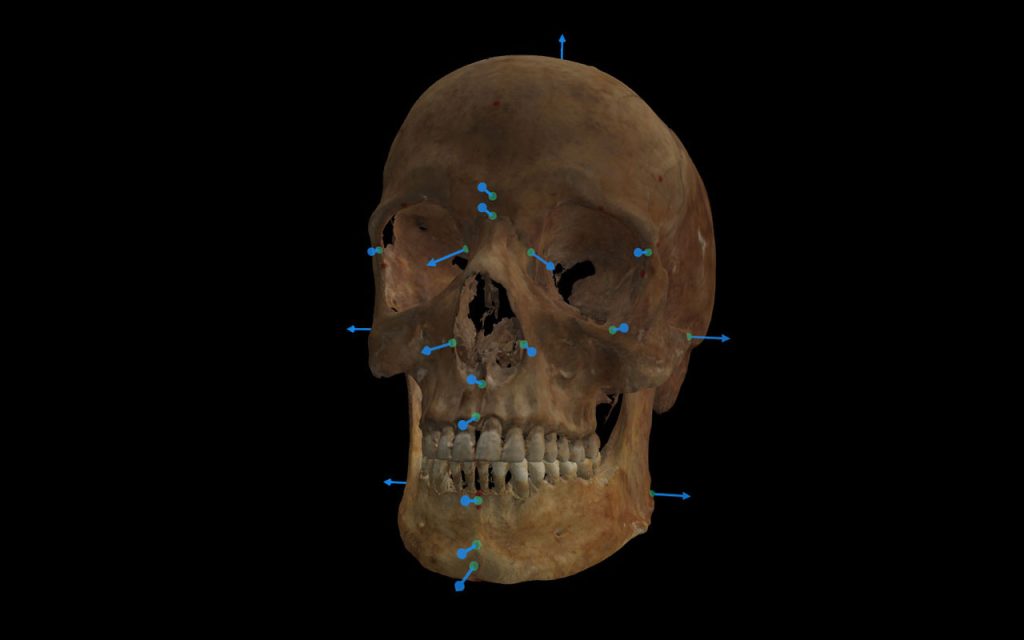
HUMAN IDENTIFICATION
Automatic Landmark Detection
PRODUCT
Craniofacial analysis requires finding the exact location of anatomical features. Precisely marking these features with reference points is described as landmark annotation or “landmarking. Landmark annotation is a manual and time-consuming task whose results and accuracy are largely defined by the experience of the expert placing them.
Our automatic landmark annotation algorithm works in two stages. First, a 3D template of a skull is used to approximate the landmark placement on the target skull. Therefore, a second stage is tasked to improve the location of each landmark according to its anatomical definition. Multiple heuristics are considered to assist this task, such as finding the vertical symmetric plane, detecting orbital and nasal contours, and cranial sutures, using curvature to find the most extremal locations near a point, or even simulating an instrumental measurement to relate two landmarks.
The algorithm is a valuable and reliable alternative to manual landmark annotation for forensic tasks.
OTHER REFERENCES
SCIENTIFIC PUBLICATIONS
G. Gómez-Trenado, P. Mesejo, O. Cordón. Cascade of convolutional models for fewshot automatic cephalometric landmarks localization. Engineering Applications of Artificial Intelligence, 123 (B), (2023) 106391. Order 7/65. Q1.
E. Bermejo, K. Taniguchi, Y. Ogawa, R. Martos, A. Valsecchi, P. Mesejo, O. Ibáñez, K. Imaizumi. Automatic landmark annotation in 3D skulls: methodological proposal and reliability study. Computer Methods and Programs in Biomedicine, 210 (2021), 106380. Impact factor 2020: 5.428. Category: COMPUTER SCIENCE, Theory & Methods. Order: 13/110. Q1.
L. Faria-Porto, L. N. Correia-Lima, M. Flores, A. Valsecchi, O. Ibáñez, C. E. Machado- Palhares, F. de Barros-Vidal. Automatic cephalometric landmarks detection on frontal faces: An approach based on supervised learning techniques. Digital Investigation 30 (2019) 108-116. Impact factor 2019: 1.736. Category: COMPUTER SCIENCE,
INTERDISCIPLINARY APPLICATIONS. Order: 70/109. Q3.
B. R. Campomanes-Álvarez, O. Ibáñez, F. Navarro, I. Alemán, O. Cordón, S. Damas. Dispersion assessment in the location of facial landmarks on photographs. International Journal of Legal Medicine 129:1 (2015) 227–236. Impact factor 2015: 2.862. MEDICINE, LEGAL. Order: 2/15. D1. Q1.